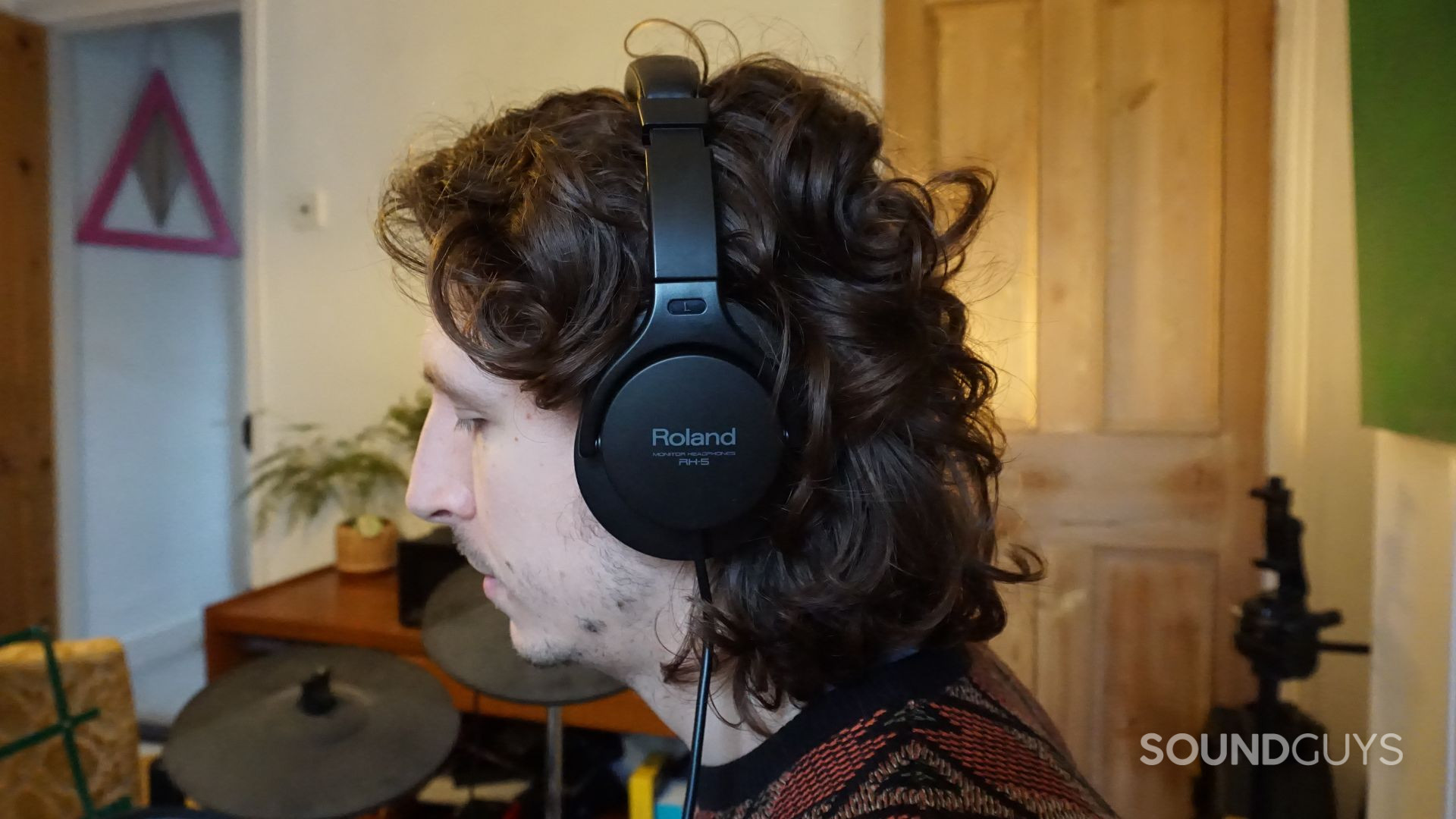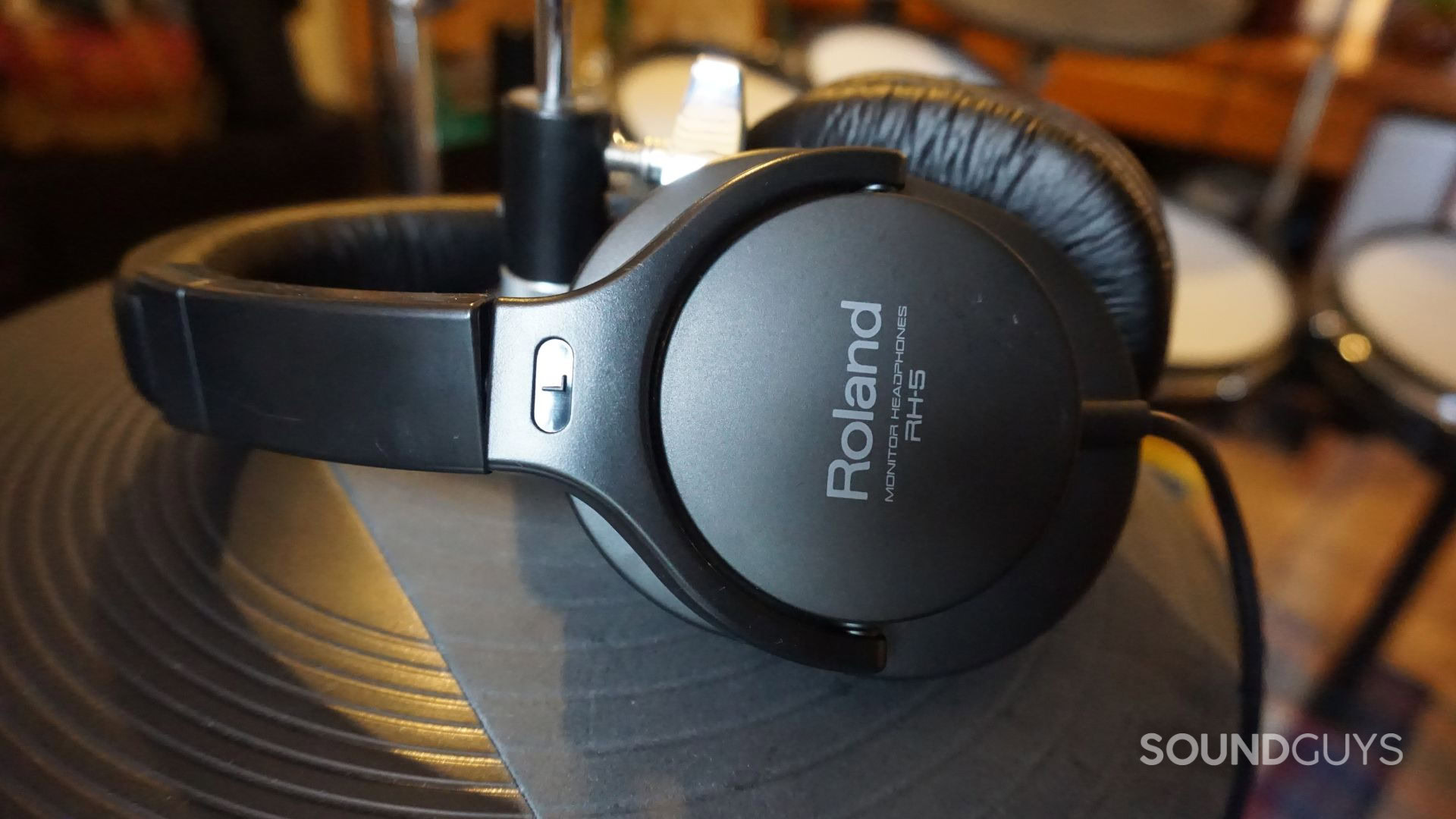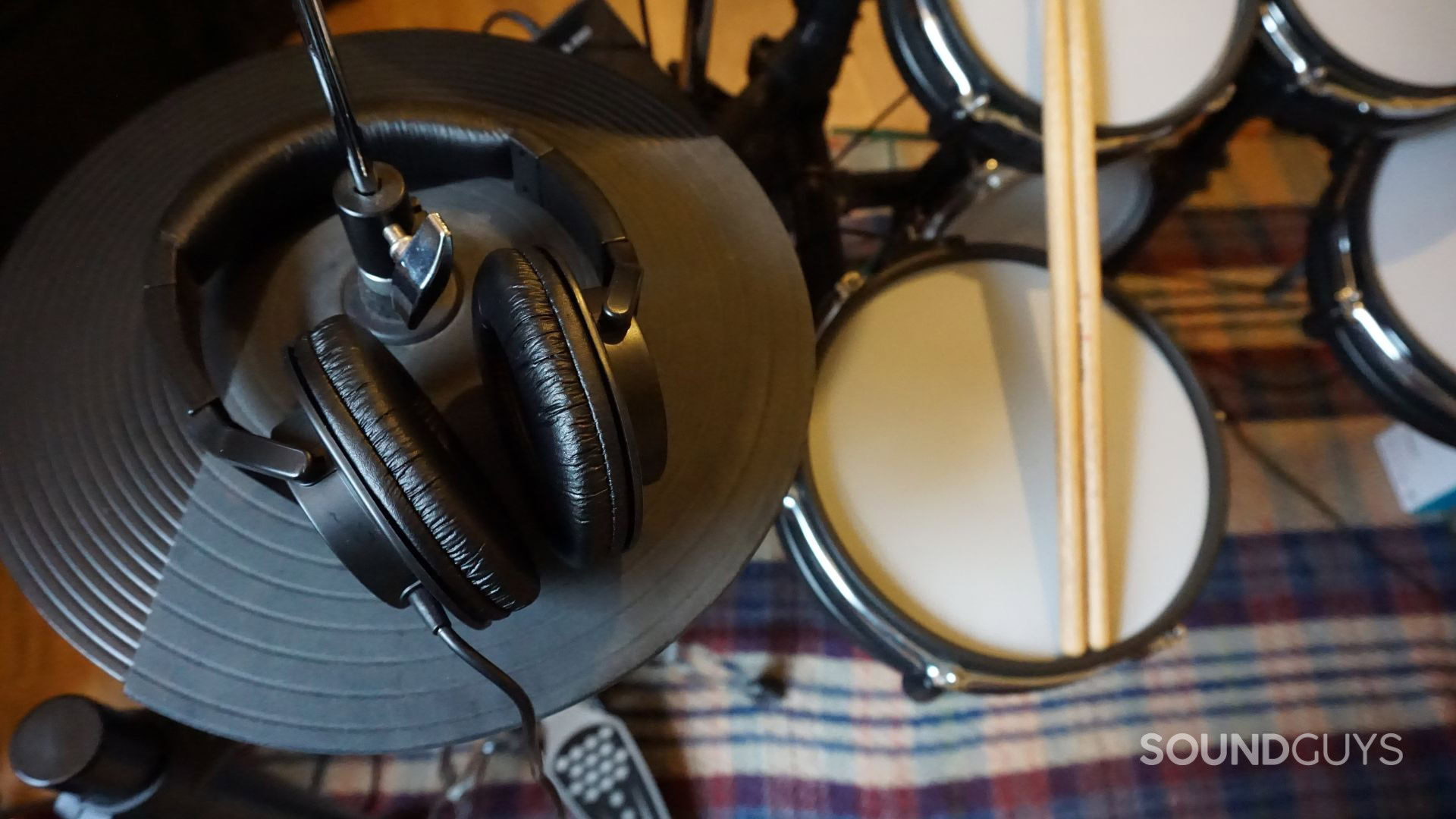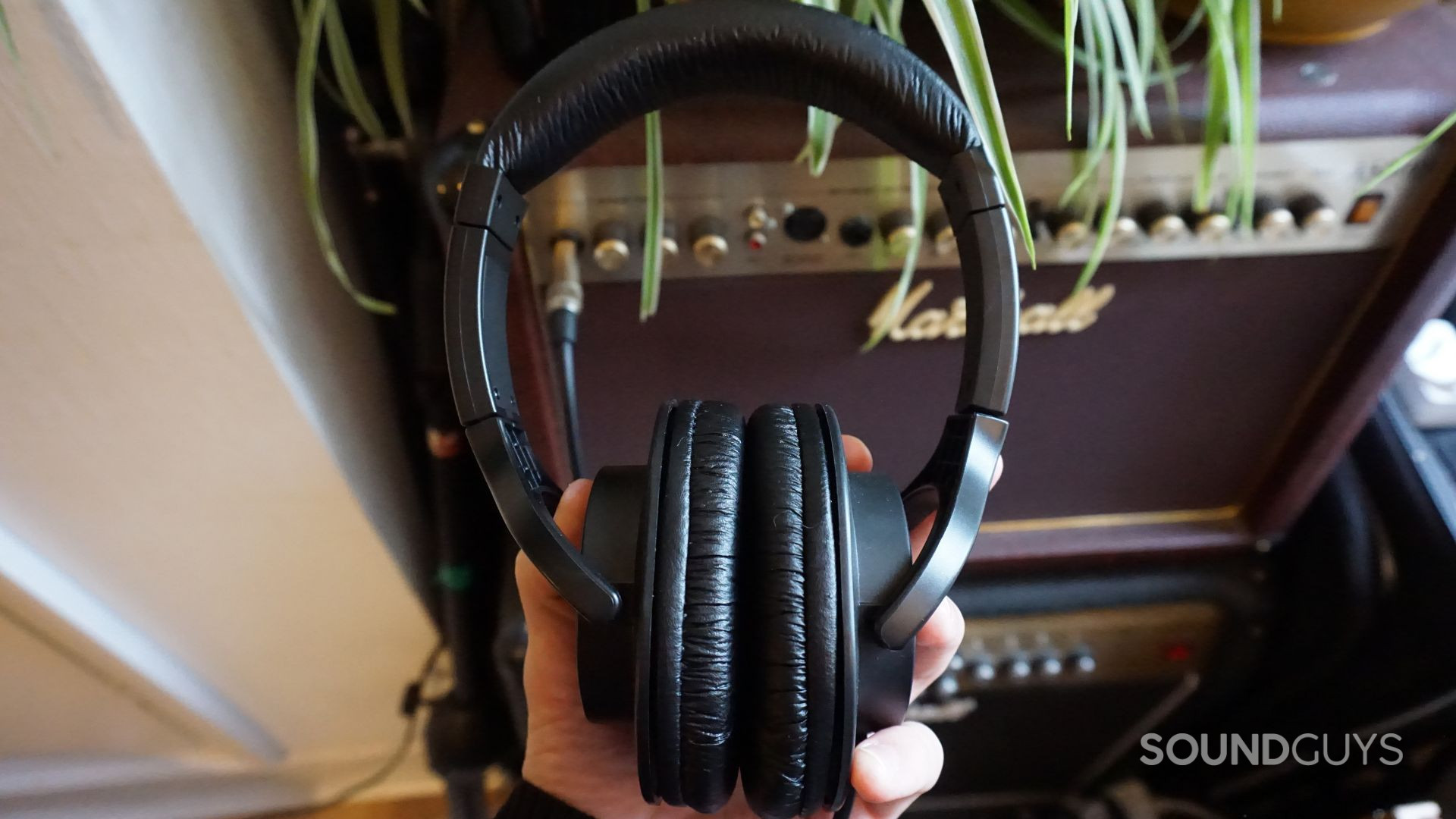All products featured are independently chosen by us. However, SoundGuys may receive a commission on orders placed through its retail links. See our ethics statement.
The Roland RH-5 headphones are a stopgap I keep going back to
November 18, 2024

Like a clumsy fool, I recently broke my Roland RH-5 over-ear headphones practicing drums at home. One exaggerated arm movement too many made them slip off my head and come crashing down onto the floor. The hinge snapped, and despite my best efforts and copious amounts of glue, I couldn’t fix them. You’d think such an incident would convince me to pool some money together and purchase more robust headphones. However, the Roland RH-5’s good sound quality and aggressively affordable price tag keep drawing me back.
Cut loose

Drumming is as close to physical exercise as you can get while playing an instrument. For example, drummers often use 4-way coordination to play different rhythms simultaneously with each limb. I am also partial to a good old-fashioned head bang to keep a steady tempo. However, the culmination of the two makes it difficult to wear headphones without them flying across the room in seconds. Purchasing in-ear monitors (IEMs) or headphones with a tight clamping force makes sense.
Unfortunately, the Roland RH-5 do not fit snuggly. If anything, the fit is loose even when the headband is set to the smallest setting. The earcups do not fit entirely over my ears either, causing minor discomfort when worn over long periods. The soft pleather ear pads are plush, but they do very little to grip the sides of my head. They also get a little warm and sweaty during practice sessions. The earcups have limited rotation too, making it difficult to fit the headphones to the contours around my ears.
The Roland RH-5 have a loose fit that means they may not stay in place when playing physically demanding drum grooves.
So the fit is nothing to write home about, but the Roland RH-5 are widely recommended for their pleasing sound quality. While the high-end is a little accentuated, they are not sibilant and there is no noticeable distortion. For the price, the headphones feature a relatively flat frequency response. This makes them suitable for hobbyist music producers and playing electronic instruments without adding unwanted coloration. Their closed-back design also isolates your mix from some ambient noise.
The Roland RH-5 ship with a 3-meter-long jack cable that is desirable for drumming. This allows for unencumbered playing and extra cable slack. Unfortunately, it isn’t detachable, meaning you’ll have to buy a new pair of headphones if you fray the wire. Nevertheless, the package includes a 6.3mm jack adapter to connect the headphones to other professional audio equipment like amplifiers and audio interfaces.
Easy peasy beats

The Roland RH-5 do not have all the bells and whistles of other more expensive cans, but that’s their appeal. Musicians can plug in, put on, and play without fiddling with an external amp or attaching cables. At 190g they are also exceptionally lightweight, making long jam sessions a breeze without suffering neck fatigue. This is largely thanks to their all-plastic build which, while cheap to touch, does everything it needs to.
Loose-fitting headphones are a drawback for most, but some drummers may prefer a non-isolating fit. Wearing the Roland RH-5 allows some acoustic environmental sounds to reach the ears. This can be handy when using a metronome or backing track while playing with a live band. It’s also useful in studio environments, as you don’t need to keep taking off and putting on your headphones to converse with other musicians.
The Roland RH-5's bare-bones feature set make it an excellent companion for those wanting plug-and-play simplicity.
Many consumer headphones have gotten more bassy over the past few years. From the Sony WH-1000XM5 to the Bose QuietComfort Ultra, bass heads can rejoice. I find the Roland RH-5 also have an emphasis on bass, but not so much as to mask midrange and treble frequencies. Sure, the headphones are less equipped for monitoring and mixing than open-back headphones. But in this price range, it’s hard to go wrong.
One of the major benefits of using the Roland RH-5 is their replaceable ear pads. Sold in sets of two, these can be fitted when the pleather inevitably degrades over time with repeated use. The Roland website lists authorized retailers that stock compatible ear pads. Users can expect to pay little more than $2 at the time of writing. Unfortunately, major retailers including Amazon and Best Buy have limited availability and Roland does not sell replacements directly from its website. Even still, the Roland RH-5 are considerably cheaper than the competition.
You had me at 45 bucks

Headphones break at the best of times, let alone during rigorous activities. Drumming is innately physical, and more expensive headphones are not invincible to its throws. Shelling out for more robust, tighter-gripping headphones could save money and hassle in the long run. Alternatively, they could break as often as cheaper cans and weigh heavier on your wallet.
The Roland RH-5 currently cost ($44.99 at Amazon). For the price, users receive headphones with 40mm dynamic drivers that deliver decent sound quality. Unlike many studio headphones, the RH-5 have an impedance of 32 ohms. This is handy, given most electronic drum kit modules do not output enough voltage to power high-resistance headphones.
Electronic drum kit modules do not usually provide enough voltage to power high-resistance studio headphones.
For example, the Beyerdynamic DT 770 PRO cost ($169 at Amazon) and are a fan favorite among musicians and producers. In addition to a tighter clamping force than the Roland RH-5, the headphones ship in 32Ω, 80Ω, and 250Ω impedances. The first two variants should work as intended with most drum modules and electronic instruments. However, the 250Ω version may not receive enough power from the module and will sound substantially quieter. In such circumstances you would need to power the cans with an amplifier, costing even more money.
The classic Sony MDR-7506 ($89 at Amazon) are a happy middle ground. Adorning a similar form factor to the Roland RH-5, they own a metal-notched headband with a firm clamping force. The cans also ship with a three-meter-long coiled cable and have pleasing sound quality. Under the hood are 40mm drivers and a 63-ohm impedance that should be powerable by most electronic drums. Their closed-back design also excels at isolating your mix from unwanted environmental noise. However, at $100 a piece, they cost more than double the price of the RH-5.
But what do you think? Are the Roland RH-5 reliable headphones for monitoring electronic instruments, or do Beyerdynamic and Sony remain the industry champions? Let us know in the poll below.
Are the Roland RH-5 good headphones for electronic instruments?
Thank you for being part of our community. Read our Comment Policy before posting.